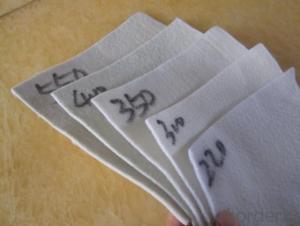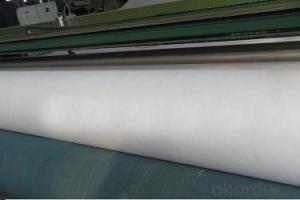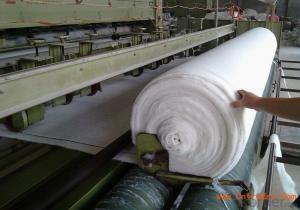Non Woven Geotextile for Road Construction
- Loading Port:
- Qingdao
- Payment Terms:
- TT or LC
- Min Order Qty:
- 10000 m²
- Supply Capability:
- 500000 m²/month
OKorder Service Pledge
OKorder Financial Service
You Might Also Like
Structure of Non Woven Geotextile Description:
Nonwoven geotextiles are multi-purpose fabrics that are felt-like in appearance.Nonwoven Geotextiles are available in varying strengths and thicknesses to ensure appropriate material selection for your project. Custom roll sizes are also available.
Main Features of the Non Woven Geotextile:
1.Separation
The isolation of the railway dregs and the roadbed, roadbed and the soft base, surface of the airdrome and parking lot and the groundsill, different dam materials. It isolates the soil and the gravel of two kinds different
granule pathway from the groundsill or other buildings.
2.Reinforcement
The highway, railway, soil-stone dam, breakwater, airport, backfill soil of retaining wall, slope protection, etc in which distributes the earth stress, prevents the side-displacement of the earth body and improves the earthbody stability.
3.Protection
It prevents the bank from being washed out, protects the bank and the
bottom, prevents the water and soil from being washed away
Non Woven Geotextile Images
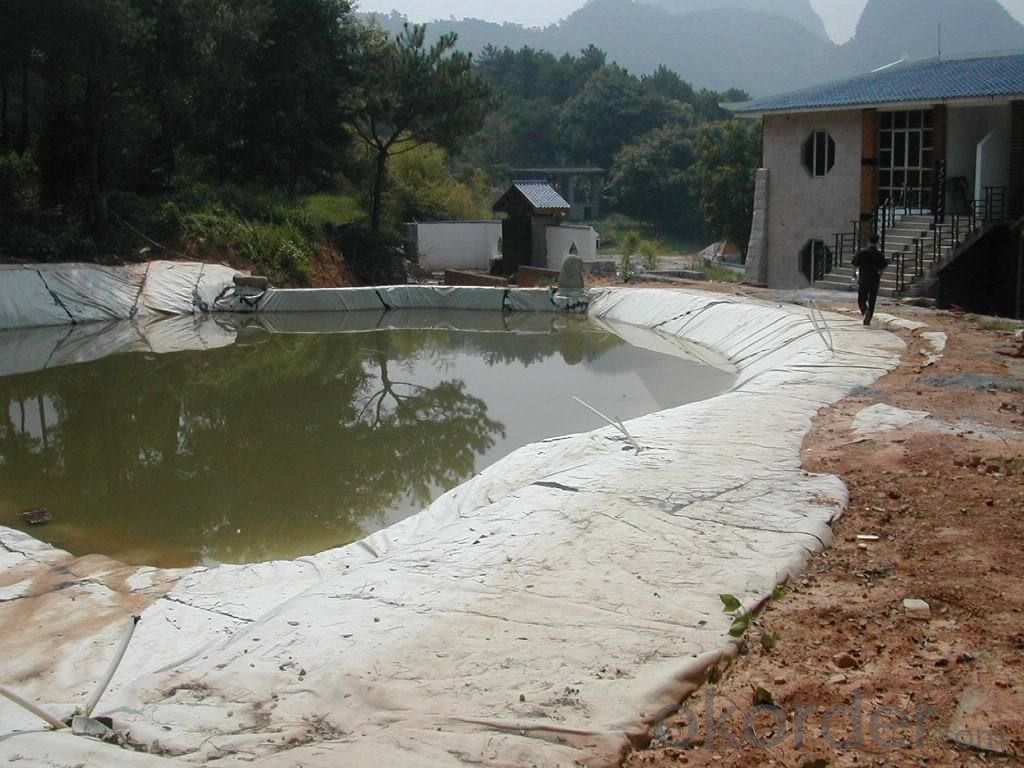
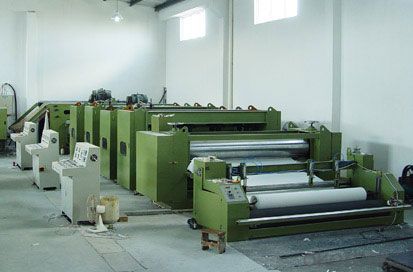
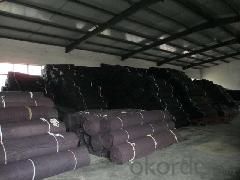
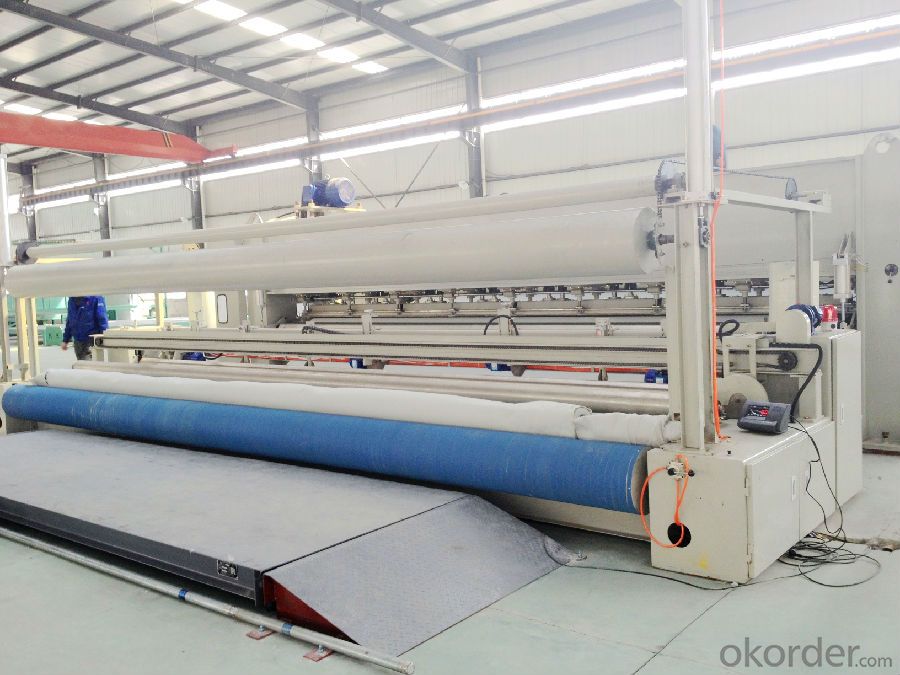
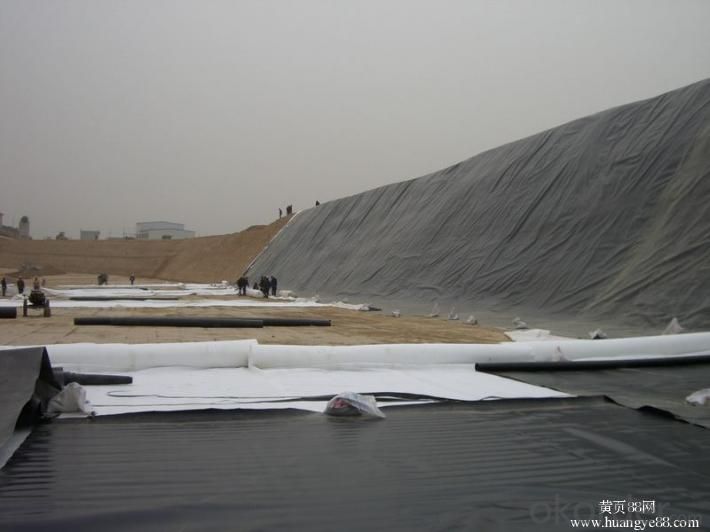
Non Woven Geotextile Specification:
Material | PET(polyester) OR Polypropylene |
Weight | 100g/m2-800g/m2 |
Width | 1-6m |
Length | 100m(or as your demand) |
Packing | Standard Export Packing. Or Packed as customers' requests. |
Payment terms | TT/LC |
Delivery time | 15-30days |
Items | 100 | 150 | 200 | 250 | 300 | 350 | 400 | 450 | 500 | 600 | 800 | Note |
Quality error in unit area% | -8 | -8 | -8 | -8 | -7 | -7 | -7 | -7 | -6 | -6 | -6 | |
Thickness .mm.≥ | 0.9 | 1.3 | 1.7 | 2.1 | 2.4 | 2.7 | 3.0 | 3.3 | 3.6 | 4.1 | 5.0 | |
Error of width.% | -0.5 | |||||||||||
Breaking strength,KN/m≥ | 2.5 | 4.5 | 6.5 | 8.0 | 9.5 | 11.0 | 12.5 | 14.0 | 16.0 | 19.0 | 25.0 | CD MD |
Elongation at break≤(%) | 25-100 | |||||||||||
CBR bursting strength KN≥ CBR | 0.3 | 0.6 | 0.9 | 1.2 | 1.5 | 1.8 | 2.1 | 2.4 | 2.7 | 3.2 | 4.0 | |
Effective aperture090(095)mm | 0.07-0.2 | |||||||||||
Vertical permeability coefficient cm/s | Kx(10-4-10-3) | K=1.0-9.9 | ||||||||||
Tearing strengthKN≥ | 0.08 | 0.12 | 0.16 | 0.20 | 0.24 | 0.28 | 0.33 | 0.38 | 0.42 | 0.46 | 0.60 | |
FAQ
We have organized several common questions for our clients,may help you sincerely:
Q1: How about your company?
A1:Our company are one of the largest geosynthetic products supplier in the world.We have the products experience more than 20 years.Already export to USA/Germeny/Australia/Zambia/Brazil etc.more than 20 countries.Almost 10years.Our products including Geocell/Fiberglass Geogrid/Geomembrane/Geotextile/Geonet etc.
Q2.Does your products have good qualitity?
A2:Yes,we have do many big projects such as the 2008 Beijing Olympic BIRD NEST. Divert water from the south to the north project. And our products have CE certificate also.
Q3:How long can we receive the products after purchase?
A3:In the purchase of product within three working days, We will arrange the factory delivery as soon as possible. The pecific time of receiving is related to the state and position of customers.Commonly 15-20 working days can be delivery.
- Q:Can geotextiles be used for erosion control in coastal dunes?
- Yes, geotextiles can be used for erosion control in coastal dunes. Geotextiles are often used as an erosion control measure in coastal areas to stabilize the soil and prevent erosion caused by wind and water. They can be installed on the dune slopes to prevent sand movement and promote vegetation growth, thereby maintaining the integrity of the dune system and protecting it from erosion.
- Q:How do geotextiles help with reinforcement of geogrid reinforced walls?
- Geotextiles help with the reinforcement of geogrid reinforced walls by acting as a separator and filter between the soil and the geogrid. They prevent the migration of fine soil particles into the geogrid, ensuring its effectiveness in providing stability and tensile strength to the wall. Additionally, geotextiles distribute the load evenly across the geogrid, enhancing its structural integrity and overall performance in reinforcing the wall.
- Q:Geotextile mouth chain suture is what kind of picture
- Hello I am a professional geotextile and other geotextile materials,
- Q:What are the standards and regulations governing geotextiles?
- The standards and regulations governing geotextiles depend on the country or region. In general, geotextiles are regulated by organizations such as ASTM International and ISO (International Organization for Standardization). These standards typically cover testing methods, specifications for materials and products, installation guidelines, and performance criteria for various geotextile applications. Additionally, specific industries or sectors, like civil engineering or construction, may have their own regulations or guidelines for the use of geotextiles.
- Q:What are the advantages of using geotextiles in soil erosion prevention?
- Geotextiles offer several advantages in soil erosion prevention. Firstly, they act as a physical barrier that prevents soil particles from being washed away by water or blown away by wind, thereby reducing erosion. Secondly, they promote vegetation growth by retaining moisture and preventing soil compaction, which ultimately enhances soil stability. Additionally, geotextiles are permeable, allowing water to infiltrate into the soil while filtering out sediment and pollutants, thus improving water quality. Lastly, they are durable and long-lasting, providing long-term erosion control and reducing maintenance requirements. Overall, geotextiles play a crucial role in preventing soil erosion by providing effective and sustainable solutions.
- Q:What are the different installation methods for geotextiles?
- There are several installation methods for geotextiles, including direct placement, trenching, and mechanical installation. In direct placement, the geotextile is simply laid over the desired area and secured in place with stakes or sandbags. Trenching involves digging a trench and placing the geotextile in the trench before backfilling. Mechanical installation utilizes specialized equipment, such as a geotextile roller or a geotextile gun, to install the geotextile quickly and efficiently. The choice of installation method depends on the specific project requirements and site conditions.
- Q:What are the considerations for geotextile installation?
- Some considerations for geotextile installation include proper site preparation, ensuring the geotextile is compatible with the soil and project requirements, proper placement and anchoring techniques, and regular inspection to ensure the geotextile is functioning as intended. Additionally, factors such as weather conditions, traffic loads, and environmental considerations should also be taken into account during installation.
- Q:What are the considerations for geotextile selection in road rehabilitation projects?
- When selecting geotextiles for road rehabilitation projects, there are several important considerations to keep in mind. Firstly, the geotextile should have sufficient strength and durability to withstand the expected loads and stresses in the road environment. It should also be resistant to degradation from environmental factors such as ultraviolet (UV) radiation and chemicals. Another consideration is the desired function of the geotextile. Different types of geotextiles offer various benefits, such as separation, filtration, drainage, or reinforcement. The specific requirements of the road project will determine which function is most important. Additionally, the properties of the soil and subgrade should be considered when selecting a geotextile. The geotextile should be compatible with the soil type and provide the necessary soil stabilization or separation capabilities. It is crucial to assess the project's soil conditions and consult with geotechnical engineers or experts to determine the appropriate geotextile specifications. Lastly, cost-effectiveness is an essential consideration. The selected geotextile should provide the desired performance while being economically viable for the project. Considering the long-term benefits and expected lifespan of the geotextile can help in making a cost-effective decision. Overall, the considerations for geotextile selection in road rehabilitation projects involve strength, durability, desired function, compatibility with soil conditions, and cost-effectiveness.
- Q:Can geotextiles be used in green roof drainage systems?
- Yes, geotextiles can be used in green roof drainage systems. Geotextiles are commonly used as a filtration layer in green roof systems to prevent clogging of the drainage layer. They help in retaining water and reducing runoff, thereby improving the overall drainage efficiency of the green roof.
- Q:What is the difference between finished and semi-finished products?
- Think of ways to develop customers in the country Well. Foreigners may now also like, in the future may also like to like something else. We have the domestic people's own preferences are unable to control, but also control the other countries ah?
1. Manufacturer Overview |
|
|---|---|
| Location | |
| Year Established | |
| Annual Output Value | |
| Main Markets | |
| Company Certifications | |
2. Manufacturer Certificates |
|
|---|---|
| a) Certification Name | |
| Range | |
| Reference | |
| Validity Period | |
3. Manufacturer Capability |
|
|---|---|
| a)Trade Capacity | |
| Nearest Port | |
| Export Percentage | |
| No.of Employees in Trade Department | |
| Language Spoken: | |
| b)Factory Information | |
| Factory Size: | |
| No. of Production Lines | |
| Contract Manufacturing | |
| Product Price Range | |
Send your message to us
Non Woven Geotextile for Road Construction
- Loading Port:
- Qingdao
- Payment Terms:
- TT or LC
- Min Order Qty:
- 10000 m²
- Supply Capability:
- 500000 m²/month
OKorder Service Pledge
OKorder Financial Service
Similar products
New products
Hot products
Related keywords
